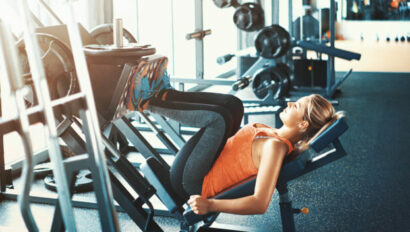5 Ways Your Workout May Hurt You
Is Your Workout Hurting You?
You’re in pretty good shape. You like going to the gym. You want to get a little stronger – a little more fit – and you have some back pain from time to time that you hope some good exercise might cure – so you start working out. Great start! But guess what? After beginning to work out, your back gets worse! Your knees start to hurt so you try strengthening your adductors and abductors, using a “Jane Fonda” machine, and now they hurt even more!
Nobody begins a training program looking to get hurt, but muscle imbalances can lead to injury. For example, if you inhibit an underactive muscle or push to strengthen an already overactive one, you may do more harm than good. We all have good intentions, but there are now scientific approaches that can predetermine physiologic weaknesses that can really make a difference when it comes to offsetting potential injury. And that is why neuro-musculoskeletal assessments are so helpful, as they will determine your strengths, weakness and potential dysfunction before you engage in any rigorous exercise program.
Many workouts are geared to build muscle without regard for whether an individual’s muscles may be underactive or overactive. Of course everybody has some muscle imbalance, but it is crucial to identify which activities in your workout are increasing your risk of injury. Your program should address the bio-mechanics of YOUR body as it relates to YOUR particular issues.
Whether you work out alone, with a trainer, or participate in a group fitness class or program, it is always a good idea to get a fitness assessment that can help identify your personal needs and can suggest a plan to address overactive or underactive muscles in a meaningful, productive, and safe way.
An assessment is simple. Trainers ask a few simple questions that help provide you and anyone training you with a deeper understanding of your life outside the gym from a biomechanical perspective. Do you engage in repetitive overhead activities? Do you sit at a computer all day? Do you spend a lot of time driving? The answers allow trainers and fitness professionals to understand which of your muscles are overactive and which are underactive – information that is invaluable for developing a meaningful exercise program that will help you address potential problems before they occur.
Five ways to avoid workout injuries
LOW BACK PAIN FROM LAT PULLDOWNS: Do you have low back arching? Due to the kinetic chain, low-back pain can result from tight lats. If your workout includes heavy lat pull-downs, you will likely exacerbate the problem.
LOW BACK PAIN FROM LEG CURLS: Do you have low back rounding? Hamstrings would be better served by foam rolling and stretching. Trying to strengthen your hamstrings would be a mistake. Strengthen your gluteus maximus and hip flexors instead.
FORWARD HEAD POSTURE FROM SHRUGS: Is your posture off so that your head sits forward from your shoulders? Heavy shrugs aren’t the answer. A forward head usually indicates that your upper trapezius muscles need to be inhibited, not strengthened, so try applying 30 seconds of pressure to tender areas
ABDUCTION: If your knees move inward, by all means, foam roll your adductors as they probably need to be inhibited. For strengthening however, consider abduction strengthening exercises to help counter-balance this condition.
LEG EXTENSIONS: If you have an excessive forward lean, leg extensions will strengthen the quads, but if you suffer from forward lean, it is likely that your quads are tight and would be better served with self-myofascial release for 30 seconds. You’d also be better off spending your time strengthening the gluteus maximus and core.
Simple fitness assessments will help with these kinds of exercise modifications. The assessment process can vary greatly, and not all of them involve a full evaluation of muscle balance. And they should. At the JCC, we believe that static postural assessments are an important first step you can take against the chance of injury as you commit to a path of greater health and fitness. They provide important information about the alignment of our bodies and it is something our fitness experts strongly encourage and provide.
Schedule a FREE assessment with me or another trainer by contacting the JCC or just stop by! It’s time to understand your own body with all its strengths and limitations so you can power ahead to a customized program that can help you achieve your goals.

Written by Dan Dubelman, Fitness Specialist the Kaplen JCC on the Palisades. Dan holds a BA from Cornell University, and an MA from Johns Hopkins University, where he taught writing. He is a NASM Corrective Exercise Specialist, an AFFA Certified Trainer, and is also CPR/AED Certified. He works with older populations, youth and clients with special needs.


